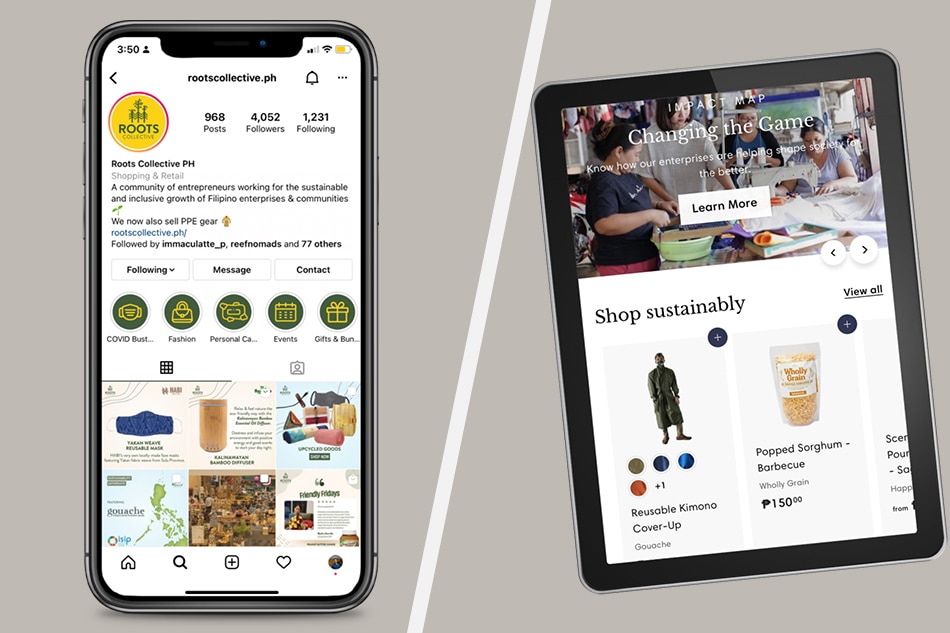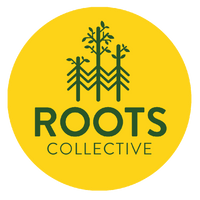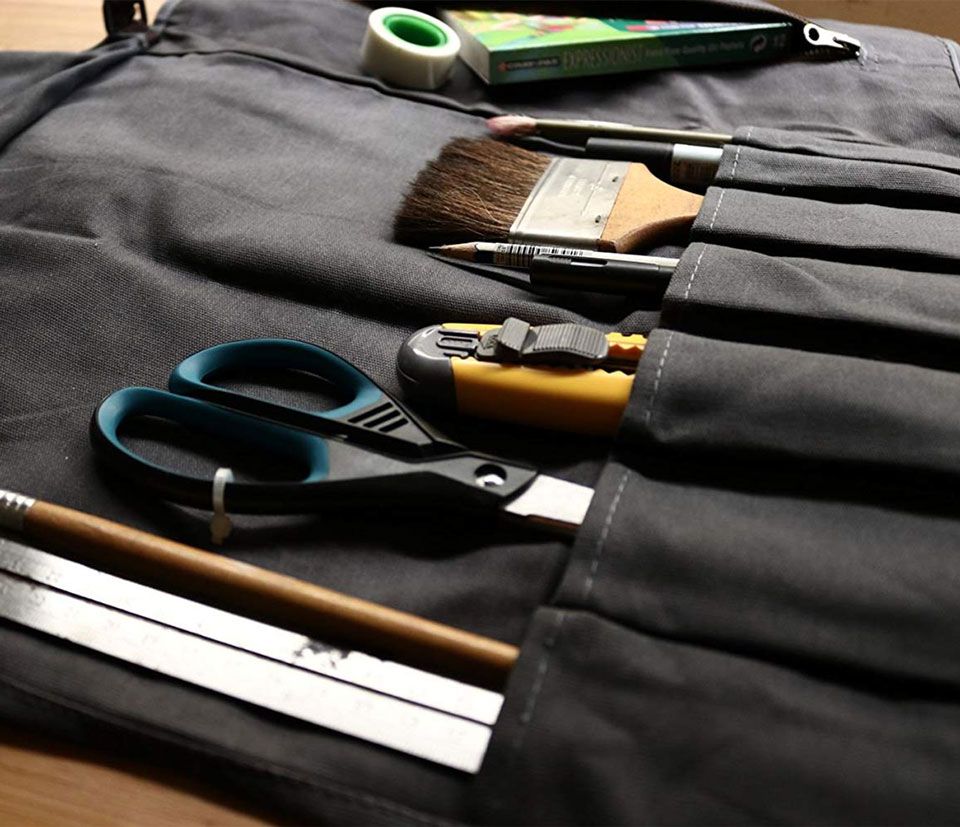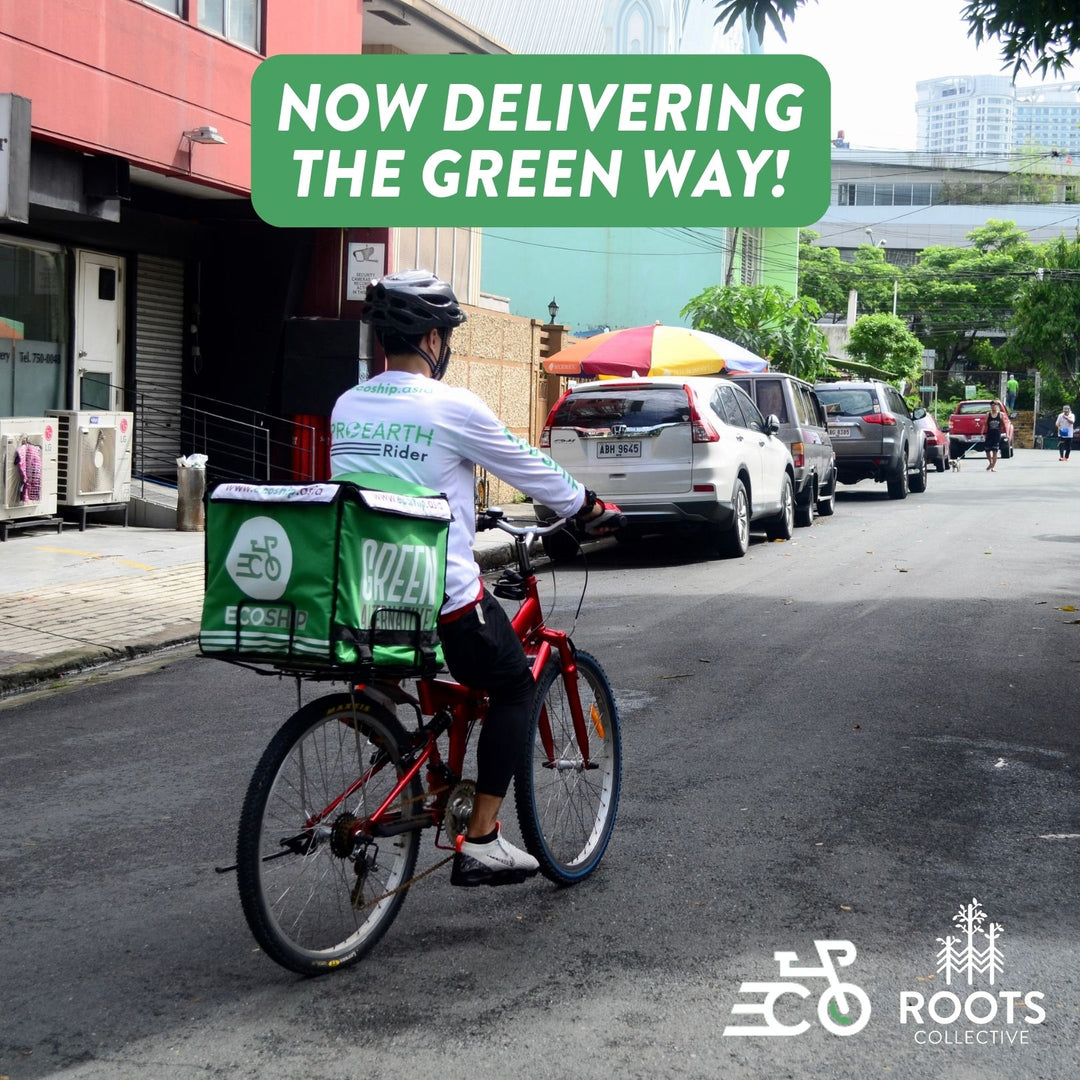[Staying Rooted] Adapting to the fibers of our being: MSMEs and technology

The date was 16 March 2020.
Megaworld Lifestyle Malls announced the indefinite closure of all its malls in line with ECQ.
Immediately, I wasted no further time. I instructed our Uptown pop-up store staff to secure all merchandise, and our manager to bring over to our house all the cash, financial documents, and gadgets. And for them to take care and hang in there.
Then… darkness.
I had just formally been installed as GM after informally serving as such for the pop-up store in the last several months, after two and a half years away. We were a fortnight fresh from our first general assembly as an association, Dexter and I ready to implement our pop-up caravan. We’d read about COVID-19 hitting China, Western Europe, and the US hard, and prayed that the Philippines would somehow miraculously be spared. But it was not to be. Full of fear and confusion, we wondered what we could and had to do.
The solution came three days later: A returning enterprise – one of our first – who had been out of action for two years offered us a novel disinfectant for a novel virus. Immediately springing into action, Dexter and I used our only remaining accessible asset – social media. We set up a Google Form, and planned regular posts on Facebook and Instagram to promote the new product. When it became clear that this would be the new reality, we knew we needed to concretize it.
During our planning, e-commerce was slated to come much later on, once the pop-up stores could comfortably run on their own. And even then it would be used for corporate clients first, retail next. But due to the circumstances, Dexter and I quickly decided: We would enact our plans in reverse, beginning with retail e-commerce – lest we altogether perish.
Fortunately, the foundations had been built the previous year with a half-built Shopify site. We took over it, and together with our marketing director, built it up, launching RootsCollective.PH formally on our 4th anniversary – 2 May 2020.
Digital has been our direction ever since. And it’s here to stay.

Technology: Rightfully prized
There is a line in Dan Brown’s 2000 novel, Angels & Demons, that says, “Science itself caused half the problems it was trying to solve.” Given that the Oxford English Dictionary defines technology as science applied practically, the statement applies to technology as well – think climate change, plane crashes, industrial disasters, cyber-attacks.
On the flip side, as history also shows, technology – managed wisely – can be a force of good, for good. And sometimes, embracing it is the only way to go forward.
One of our mentors from the Innovation for Social Impact Partnership’s (ISIP) Social Impact Accelerator (SIA) taught us that if there was one thing the COVID-19 pandemic had done for businesses, it was to prove their viability in an accelerated timeframe. We had done the right thing by adapting with technology and converting into a digital marketplace and platform of social enterprises and creative ups. With prolonged uncertainty on both the customer and business sides, doing things as they were was simply not feasible for us. We needed to try and stay ahead in terms of our offering and delivery of such.
One thing we noticed that ISIP – and the investor networks they brought in – liked was the use of technology in the social enterprises they supported. Understandably so: technology has helped entrepreneurship achieve unprecedented growth and scale the world over – just look at Silicon Valley and see what are the biggest names emanating in business these days. Although it does involve much capital investment for much growth, when harnessed properly, technology becomes quite cost-efficient because the exact same solution, product, or service can be used to reach and connect millions.
Even internally, for businesses, technology has allowed us to stay in touch and continue working even from home, when going to the office is prohibited or dangerous. Advances in cloud computing and storage, online banking and interconnectivity, and even video conferencing software (to the point that “Zoom” has become a verb the same way “Google” is) has enabled us to keep up our productivity and careers (mostly) even with the world ground to a halt.
All these are obvious truths that have been known for years now, to the point that it sounds like a broken record, and they may even seem academic and too macro-oriented at this point. How does this affect social enterprises and MSMEs, the backbone of the Philippine economy, then?
MSMEs and technology

According to the GoDaddy 2020 Global Entrepreneurship Survey, conducted in June 2020, around 60% of small businesses in the Philippines have been relying on technology to survive during the pandemic. 51% were using social media and messaging applications, 43% were looking into creating a website, and 38% were considering getting into e-commerce. Tina Shieh, marketing director for GoDaddy Asia, believes that true competitiveness in the digital realm requires having both a website and social media presence. As was noted by Dexter in last week’s Staying Rooted article, Gouache overhauled and relaunched their website during the pandemic.
But even just social media, which is free to start as long as you have a device and a connection, can already provide a head start. It kept us afloat while we built up our web store, and now it serves as our primary marketing channel. Other technological advances, such as booking deliveries, have made it much more efficient for us to deliver orders; while online banking and previously-free interbank transfers meant I didn’t need to leave the house anymore to remit sales and pay suppliers, so I could keep myself and my family safer.
Had we not shifted to selling our partner social enterprises and creative startups’ products online, and managing ourselves via the Internet, we would have closed within a month from the start of the pandemic. From being very physically-oriented in our first 4 years to suddenly striving to become the Amazon of social enterprise, we are a testament to how much we’ve needed to embrace technology to stay afloat – to the point that it is now part of our very fiber (pun intended).
Adapting to technology can also be part of business continuity planning, which I wrote about two weeks ago. Hitherto-manual systems and documents and records may be at greater risk of loss in the event of disasters. Embracing technology opens the doors to other ways to back up and even make more efficient the vital processes that can keep the organization competitive and able to bounce back better and faster when something happens.
It's easy...
The good news is that it’s easy for MSMEs to begin harnessing technology, with it so ubiquitous and very low-cost in our daily lives. Personally, the biggest technological boon to our family in recent times has been Viber, which brought our already-close clan even closer to each other. And during the pandemic, up until now, Viber – and Telegram, Facebook, WhatsApp, etc. – has played host to so many hyperlocal marketplaces and home-based businesses that even established MSMEs have turned to it, us included.
I personally saw our subdivision’s marketplace group increase perhaps fourfold in the first year of the pandemic alone, and daily postings becoming so frequent that many of my neighbors had to mute the group, with the more prominent sellers creating their own spin-off neighborhood groups. I am a part of, or have seen, several larger marketplace groups across different platforms, such as NCR-wide, New Manila, San Juan, Chinese-Filipino-specific, coffee-specific, and even just general bouncing back spaces for entrepreneurs.
I know people who run their businesses entirely via smartphone. All these platforms, now condensed into apps or accessible via Web browsers, have made it possible. Given this, it’s not only easy for MSMEs to adapt to technology in these times, but it’s also easy to start a business through embracing the digital realm. You just need messaging apps, social media (like Facebook and Instagram), a web store engine (like Shopify) or even membership in e-marketplaces (like Lazada and Shopee), a cloud storage for documents (like Google Drive and, by extension, Google Docs), a user-friendly graphic creator (like Canva), and mobile banking and e-wallets (like GCash and any bank with online banking services).
...but...
Sadly, with all the barriers to accessibility especially in the countryside, many other MSMEs are not as able to fully capture the opportunities as much as those living in the metropolis. A lack of infrastructure means that traditional, manual systems are still the norm for many, and this will only exacerbate the recovery process for MSMEs as a whole.
There is some progress and hope, with platforms making it easier for more Filipinos to stay connected. Free access to Facebook and Messenger, relatively affordable data packages and smartphones, mobile wallets like GCash, and the like are slowly trickling down and helping us beyond being just the “social media capital of the world”, but hopefully the “digital capital of the world”. But unless more investment is poured into infrastructure, and unless egos step aside for the sake of genuine service to the country and the common good, technology may still end up being a harbinger of division, rather than of the universal connectivity it aspires to offer.
~
















Leave a comment